+91 9493616161
+91 9493616161
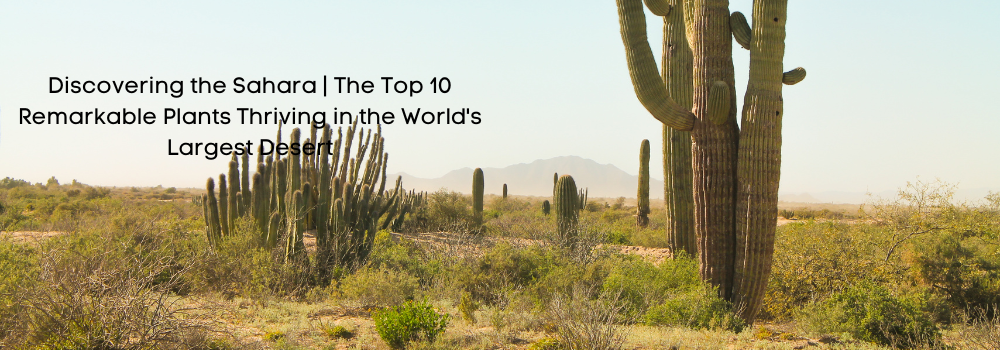
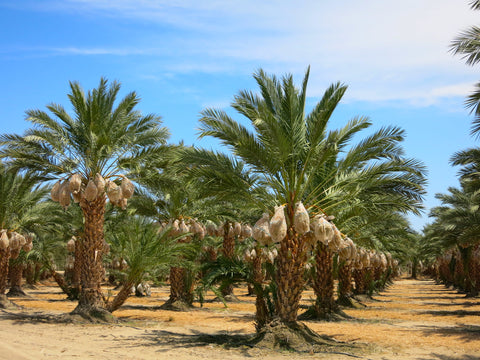
The Date Palm (Phoenix dactylifera) is a majestic and iconic plant species that thrives in the harsh conditions of arid regions, notably the Sahara Desert. This palm is highly revered not only for its aesthetic appeal, creating lush oases amidst barren landscapes, but also for its invaluable fruit production, offering a critical food source in desert communities.
Botanical Description: Date Palms can reach impressive heights of up to 23 meters (75 feet) with a robust trunk cloaked in a herringbone pattern of leaf bases. Its leaves, extending up to 6 meters (20 feet) in length, are pinnate, with numerous slender, pointed leaflets. The trees are dioecious, meaning individual plants are either male or female. Female palms produce large clusters of dates, which hang heavy on the branches, ripening to a rich brown or golden color.
Cultivation and Uses: Cultivation of Date Palms dates back thousands of years, deeply intertwined with the history and culture of North Africa, the Middle East, and the Indus Valley. They require full sun and are well-suited to hot, arid environments, being remarkably tolerant of drought thanks to their deep root systems. However, for fruit production, access to water is essential, and thus they are often a hallmark of oasis agriculture.
Dates are incredibly nutritious, rich in sugars, fiber, vitamins (notably B vitamins), and minerals such as potassium and magnesium. The fruit can be eaten fresh or dried, offering versatility in culinary uses from snacks to desserts and even savory dishes.
Beyond their fruit, Date Palms have multifaceted uses. The trunks provide valuable timber, the leaves are used for making baskets, mats, and other crafts, and the sap can be tapped to produce palm sugar or fermented into alcoholic beverages in some regions.
Ecological and Cultural Significance: In the ecosystems where they naturally occur or are cultivated, Date Palms offer shade and habitat, contributing to the biodiversity of desert oasis environments. Culturally, they symbolize life and sustenance in many desert cultures and are associated with hospitality and peace in various traditions.
Conservation and Challenges: While widely cultivated, Date Palms face threats from habitat loss, over-exploitation, and pests such as the red palm weevil. Conservation efforts focus on sustainable cultivation practices, pest management, and the preservation of traditional varieties that possess unique genetic qualities and adaptations.

Sahara Mustard (Brassica tournefortii), also known as African Mustard, is a highly adaptive and invasive plant species originating from the desert regions of North Africa and parts of the Middle East and Asia. This annual herb thrives in arid environments, including the Sahara Desert, and has also spread to deserts in North America, such as the Mojave and Sonoran Deserts, posing significant ecological challenges.
Description: Sahara Mustard grows rapidly, reaching up to 1 meter in height. It features small, yellow flowers and broad, green leaves. The plant is easily recognizable by its long, slender seed pods, which can contain numerous seeds. These seeds are capable of remaining dormant in the soil for several years, contributing to the species' resilience and invasive nature.
Adaptations: One of the key adaptations of Brassica tournefortii is its ability to germinate and grow rapidly following rainfall, outcompeting native flora for resources. Its deep root system allows it to access moisture from deeper soil layers, while its foliage is adapted to reduce water loss, making it highly efficient in desert ecosystems.
Impact: The spread of Sahara Mustard in non-native regions has raised concerns among ecologists and conservationists. It competes with native plant species for water, light, and nutrients, often leading to reductions in biodiversity. Additionally, its presence can alter soil chemistry and interfere with the natural fire regimes of ecosystems, further disadvantaging native species.
Control Measures: Managing the spread of Sahara Mustard involves a combination of mechanical removal, such as pulling or cutting the plants before seed dispersal, and the application of herbicides in areas where manual removal is not feasible. Biological control methods are also being explored, including the use of specific insects that feed on the plant, though this approach requires careful study to avoid unintended ecological consequences.
Significance: Despite its invasive status, Sahara Mustard has been used by indigenous peoples for food and medicinal purposes. The leaves can be eaten raw or cooked, and the seeds are used as a spice. However, the ecological impacts of its spread are a reminder of the challenges posed by invasive species in delicate desert ecosystems.
Efforts to control and study Brassica tournefortii are ongoing, highlighting the importance of understanding invasive species dynamics to protect biodiversity and maintain the health of desert habitats. Conservationists emphasize the need for public awareness and participation in control efforts to mitigate the spread of this invasive species.
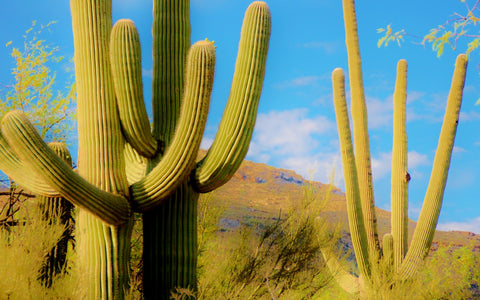
Cacti are among the most iconic and resilient plants adapted to thrive in some of the harshest environments on Earth, including the Sahara Desert. These plants belong to the family Cactaceae, which comprises over 1,750 species, each with unique adaptations to survive in arid and semi-arid conditions.
The quintessential feature of cacti is their succulent nature, designed to store water within their thick, fleshy tissues. This allows them to survive extended periods of drought. Their skin is thick and waxy, minimizing water loss through evaporation. Spines, which are modified leaves, serve multiple purposes: they protect the cactus from herbivores, reduce air flow close to the cactus surface to retain moisture, and can even provide shade. Some species have shallow, widespread roots to capture any rainfall efficiently, while others have deep root systems to tap into underground water sources.
Cacti utilize a specialized form of photosynthesis known as CAM (Crassulacean Acid Metabolism), which allows them to open their stomata at night to minimize water loss. This adaptation is particularly advantageous in the hot, dry desert environment, where evaporation rates are high during the day.
While commonly associated with desert regions like the Sahara, cacti are found in a variety of habitats across the Americas, from rainforests to high mountain regions. Their ability to adapt to a wide range of environmental conditions has enabled them to diversify into numerous species.
Cacti play a critical role in their ecosystems. They provide essential shelter and moisture for a host of desert animals, including birds, insects, and small mammals. Flowers of cacti are often brightly colored and rich in nectar, attracting pollinators such as bees, bats, and birds.
Cacti are not only ecologically significant but also hold cultural and economic value. Many species are harvested for their edible fruits and pads, used in traditional and modern cuisines. Cacti have medicinal properties, are used in landscaping and horticulture for their aesthetic appeal, and are integral to the cultural heritage of many indigenous peoples.
Cacti exemplify resilience and beauty, thriving in conditions that would be challenging for most life forms. Their ability to store water, efficient reproductive strategies, and unique adaptations make them fascinating subjects of study and admiration in the plant kingdom.
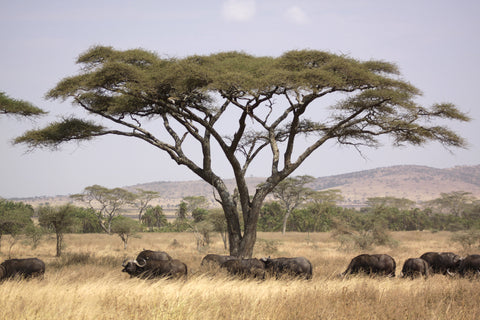
Acacia trees, belonging to the genus Acacia, are a hallmark of arid environments, especially notable in the Sahara Desert. These resilient trees are adapted to survive in some of the world’s toughest conditions, making them both ecologically significant and culturally important across the regions they inhabit.
Physical Description: Acacia trees vary widely in size and form, typically characterized by their flat-topped appearance or umbrella-shaped canopies, which provide essential shade in hot desert environments. They possess thorny branches that help deter herbivores and small, often feathery leaves that minimize water loss. The bark can range from smooth to rough, with colors varying from light gray to dark brown.
Adaptations: One of the most remarkable adaptations of Acacia trees is their deep root systems, which can reach down to great depths in search of groundwater, allowing them to survive long periods of drought. Their small, hardened leaves reduce surface area to minimize water loss through evaporation. Additionally, many Acacia species form symbiotic relationships with nitrogen-fixing bacteria, enabling them to thrive in nutrient-poor soils by improving soil fertility.
Ecological Role: Acacia trees play a crucial role in their ecosystems. They provide shade, which helps lower soil temperatures and reduce water evaporation from the ground, creating microhabitats that support a diverse range of life. Their flowers are a vital source of nectar for pollinators, while the seeds and leaves serve as food for various animals. Acacias also act as nurse plants, offering shelter and improved conditions for the germination and growth of other species.
Uses: Beyond their ecological value, Acacia trees have significant economic and cultural importance. The gum arabic produced from some species, such as Acacia senegal, is a valuable commodity used in the food and pharmaceutical industries as a stabilizer and emulsifier. The wood of Acacia trees is highly prized for its durability and resistance to pests and rot, making it ideal for furniture, tools, and construction. In many cultures, parts of the tree are used in traditional medicine to treat various ailments.
Conservation: While Acacia trees are well adapted to their harsh environments, they are not immune to the threats of overharvesting, land degradation, and climate change. Efforts to conserve these vital trees include sustainable management practices, protection of natural habitats, and restoration projects in areas where they have been depleted.
In conclusion, Acacia trees are not only survivors of the desert but also key pillars in their ecosystems, supporting biodiversity and providing essential resources for wildlife and humans alike. Their ability to adapt to some of the most challenging conditions on Earth underscores the importance of preserving these remarkable trees for future generations.

Desert Thyme, belonging to the genus Thymus, comprises a group of aromatic perennial plants known for their resilience and adaptability to harsh environments, including the challenging conditions of desert landscapes. These plants are characterized by their small, highly fragrant leaves and tiny, tubular flowers, ranging in color from white to pink or purple. Desert Thyme thrives in sandy, well-drained soils and is often found in rocky areas, where it forms low, dense mats that can withstand extreme temperatures, both hot and cold, and periods of drought.
Adaptations: One of Desert Thyme's key survival strategies in arid conditions is its ability to conserve water through its small, hairy leaves, which reduce evaporation. Furthermore, its extensive root system enables it to access deep water sources, while its leaves and stems have adapted to store moisture, ensuring survival during dry spells. The plant's compact growth habit not only helps it retain moisture but also protects it from wind and sand erosion, making it an integral part of stabilizing desert and semi-desert ecosystems.
Ecological Significance: Desert Thyme plays a crucial role in its ecosystem, providing essential ground cover that helps prevent soil erosion, a common challenge in desert environments. Additionally, its flowers are a valuable nectar source for a variety of pollinators, including bees and butterflies, thereby supporting biodiversity. The plant's ability to thrive in nutrient-poor soils also enhances soil fertility by contributing organic matter as its leaves and stems decompose.
Uses and Cultural Significance: Historically, Desert Thyme has been valued for its medicinal properties, including its antiseptic, antifungal, and antibacterial qualities. It has been used in traditional medicine to treat respiratory issues, digestive disorders, and skin conditions. The aromatic leaves are also used in cooking, lending a distinct flavor to dishes, and in the preparation of herbal teas. Additionally, Desert Thyme's essential oils are extracted for use in aromatherapy, perfumery, and natural remedies.
Conservation and Challenges: While Desert Thyme is adapted to survive in harsh conditions, it faces threats from overharvesting, habitat loss, and climate change. Efforts to conserve this and other desert-adapted plants involve habitat protection, sustainable harvesting practices, and research into their ecological roles and potential uses.

The Doum Palm (Hyphaene thebaica), also known as the Gingerbread Palm, is a distinctive species native to the Arabian Peninsula, North Africa, and some parts of sub-Saharan Africa. This unique palm is easily recognized by its branching trunk, a rare trait among palms, which allows it to grow in a wide-spreading manner rather than straight up. It typically reaches heights of 15 to 20 meters (49 to 66 feet) and is characterized by its fan-shaped, stiff leaves that can span up to 2 meters (6.6 feet) across.
One of the Doum Palm's most notable features is its fruit. The fruit is oval, brownish, and fibrous, with a sweet, gingerbread-like taste, hence the common name "Gingerbread Palm." It is highly valued in local cultures for its nutritional and medicinal properties. The fruit is edible raw or can be dried and ground into flour for use in baking and cooking. Additionally, it is often used in traditional medicine to treat various ailments, demonstrating its importance beyond nutritional value.
The Doum Palm has significant ecological and economic roles. Ecologically, it serves as a source of shade and habitat for various species, contributing to the biodiversity of its environment. Economically, apart from its fruit, the tree provides materials for construction and crafts. The leaves are used for thatching roofs and making mats, baskets, and other handcrafts, while the fibrous husk of the fruit is used for making ropes and other fibrous materials.
This palm is well-adapted to arid environments, capable of growing in both sandy soils and clay. It is drought-resistant, requiring minimal water once established, which makes it an ideal species for reforestation projects and for use in combating desertification. Its deep root system helps stabilize the soil and can reach deep water sources, further highlighting its resilience in challenging environments.
Despite its hardiness, the Doum Palm faces threats from overexploitation and habitat loss. In some regions, it is harvested unsustainably for its leaves and fruit, while expanding agricultural practices and urban development pose risks to its natural habitats. Conservation efforts are essential to ensure the sustainability of this species, which has been a part of the ecological and cultural landscapes of Africa and the Middle East for centuries.
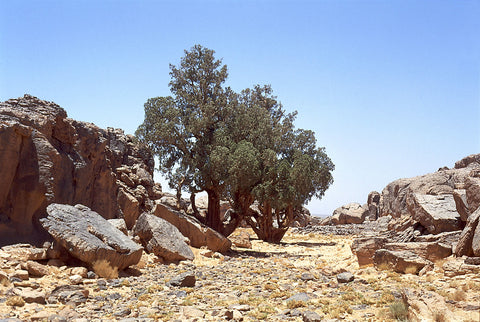
The Sahara Cypress (Cupressus dupreziana), also known as the Saharan Cypress, is a critically endangered species native to the Tassili n'Ajjer mountains of the Sahara desert in southeastern Algeria. This remarkable conifer is one of the Sahara's most enduring symbols of survival, thriving in one of the most inhospitable climates on Earth. Its existence is a testament to the adaptability of life under extreme conditions.
Physical Description: The Sahara Cypress can reach heights of up to 20 meters (about 65 feet), although many specimens are much shorter due to the harsh conditions they endure. It possesses a distinctive, often gnarled and twisted trunk, with bark that can range from gray to reddish-brown. The foliage is dense and dark green, consisting of small, scale-like leaves that form in whorls around the branches, helping to minimize water loss.
Adaptations to the Desert Environment: The Sahara Cypress has developed several adaptations to survive in the desert. Its root system is extremely deep, allowing it to access underground water sources far below the surface. The tree’s slow growth rate is also an adaptation to the arid environment, conserving energy and resources over long periods. Furthermore, its dense and compact foliage serves to reduce transpiration, effectively conserving water.
Reproduction and Conservation: Reproduction in Cupressus dupreziana is primarily sexual, with the trees producing cones that require two years to mature. However, the low rate of seedling survival in the harsh desert conditions poses a significant challenge to the species' continuation. Conservation efforts are in place, focusing on protecting its natural habitat and preventing overgrazing by livestock, which threatens the few remaining populations.
Cultural and Ecological Significance: The Sahara Cypress is not just a plant but a symbol of resilience and survival. It plays a vital role in its ecosystem, providing shelter and possibly aiding in water retention in the soil for other species. Local cultures have also recognized the tree for centuries, featuring it in art and folklore.
Threats: The main threats to the Sahara Cypress include climate change, which exacerbates desertification and reduces the already limited water availability. Human activities, such as overgrazing, wood collection, and potentially tourism, also pose risks to its habitat and survival.
Conservation Status: Listed as critically endangered on the IUCN Red List, the Sahara Cypress is among the world’s most threatened tree species. Conservation measures are urgently needed to ensure its survival, including habitat protection, controlled grazing, and reforestation projects with grown seedlings.

The Desert Marigold, scientifically known as Baileya multiradiata, is a perennial plant that embodies the resilience and beauty of desert flora. It belongs to the Asteraceae family, which includes daisies and sunflowers, and is native to the arid regions of the southwestern United States and northern Mexico. This plant thrives under full sun exposure in USDA zones 7 through 11, making it a popular choice for xeriscaping and rock gardens in arid and semi-arid environments.
Physical Characteristics: Desert Marigold grows as a low-lying bush, typically reaching heights of up to 30 cm (12 inches), with gray-green, woolly leaves that form a rosette at the base. The leaves are lanceolate and can be up to 3 inches long. Its most distinctive feature is its bright yellow, daisy-like flowers that bloom profusely from early spring through fall, and even year-round in the warmest areas. Each flower is about 1 to 2 inches in diameter, perched atop slender, leafless stems that rise above the foliage.
Adaptations: Baileya multiradiata is highly adapted to survive in harsh desert conditions. Its woolly leaves are designed to minimize water loss, reflecting sunlight to keep the plant cool and reduce evaporation. The deep root system allows it to access water from deeper soil layers, further enabling it to endure long periods of drought.
Ecological Role: The bright yellow flowers of the Desert Marigold are not just visually striking; they also play a crucial role in the ecosystem. They attract a variety of pollinators, including bees, butterflies, and other insects, which are vital for the pollination of many desert plants. Furthermore, the plant serves as a food source for certain caterpillars, which feed on its leaves.

Welwitschia mirabilis, often hailed as a living fossil, is one of the most extraordinary and enigmatic plants on Earth, native to the Namib Desert, which stretches along the coasts of Angola and Namibia. This plant stands as a remarkable testament to resilience and adaptation, thriving in one of the most inhospitable environments for over 1000 years.
Physical Characteristics: Welwitschia mirabilis possesses a unique growth form, consisting of a short, stout trunk and two long, leathery leaves that grow continuously throughout its life. These leaves become split and frayed over time due to the harsh desert winds, creating the illusion of multiple leaves. The plant rarely exceeds 1 to 2 meters in height but its leaves can stretch up to 8 meters in length in a mature specimen.
Reproduction: It is dioecious, having separate male and female plants, and reproduces through pollination by insects and possibly wind. The female plants produce cones with seeds that are dispersed by the wind, ensuring the survival of the species in its sparse habitat.
Adaptations: Its remarkable adaptations include a deep taproot system that allows it to access underground moisture and the ability to absorb fog through its leaves, providing a crucial source of water. Moreover, its slow growth rate and the ability to photosynthesize efficiently in extreme temperatures make Welwitschia mirabilis exceptionally well-suited to the desert environment.
Ecological Role: Despite its rugged environment, Welwitschia plays a significant role in its ecosystem. It provides shelter and moisture for a variety of desert-adapted organisms and contributes to the sparse vegetation cover that helps stabilize the desert soil.
Conservation Status: Welwitschia mirabilis is considered endangered, facing threats from climate change, overcollection, and habitat destruction. Conservation efforts are focused on protecting its habitat and understanding its complex biology to ensure its survival.
Cultural and Scientific Significance: This plant has fascinated scientists and nature enthusiasts for centuries. Its longevity, unique morphology, and resilience make it a subject of extensive botanical study and a symbol of survival in extreme conditions. It's protected under national and international laws, and efforts are being made to raise awareness about its conservation.
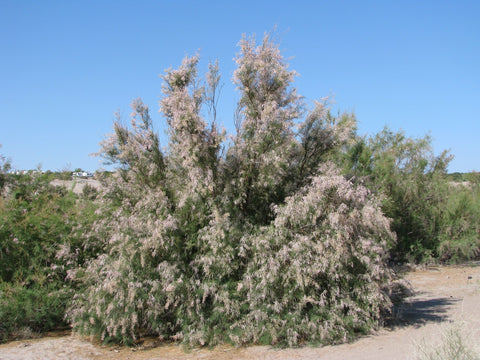
The Tamarisk, scientifically known as Tamarix spp., is a genus encompassing over 50 species of flowering plants belonging to the Tamaricaceae family. These plants are commonly found in dry, saline environments across much of Eurasia and Africa, and have been introduced to North America and Australia where they are often considered invasive. Tamarisks are well-adapted to desert and semi-desert regions, thriving in areas where few other plants can survive.
Physical Description: Tamarisk trees and shrubs are characterized by their slender branches and scale-like leaves, which give the plants a feathery appearance. The leaves are often bluish or greenish-gray, contributing to the plant's ability to reflect sunlight and conserve water. During spring and summer, tamarisks produce delicate, pink to white flowers that cluster along the branches, creating a striking visual display against the arid landscapes.
Adaptations: One of the key adaptations of the Tamarisk is its deep and extensive root system, which allows it to access groundwater sources that are out of reach for many other species. Additionally, tamarisks are capable of tolerating high levels of salinity. They achieve this by excreting excess salt through special glands in their leaves, a process that can lead to the salinization of the surrounding soil, discouraging competition from less salt-tolerant species.
Ecological Impact: In regions where tamarisks are non-native, they often outcompete local vegetation, leading to significant changes in ecosystem dynamics. Their dense thickets can alter river hydrology, reduce the availability of water for native plants and animals, and increase the salinity of the soil. Consequently, efforts to manage and control the spread of tamarisks are ongoing in several countries, involving mechanical removal, chemical treatments, and the introduction of natural predators like the tamarisk beetle (Diorhabda spp.).
Uses: Despite their reputation as invasive species in some regions, tamarisks have various uses. They are often planted as windbreaks in arid regions to prevent soil erosion. The wood of tamarisk trees is durable and resistant to rot, making it valuable for construction, carpentry, and the production of charcoal. In traditional medicine, various parts of the plant have been used to treat ailments such as rheumatism and eye problems.
For detailed research, academic papers, and specific studies on these plants, I recommend accessing botanical databases, environmental science journals, and official websites of botanical gardens and desert research institutes. Additionally, contacting Kadiyam Nursery directly could provide you with specific insights and resources related to desert plants, especially if you're looking for gardening or landscaping plants suited to arid environments.
Comments
Leave a comment